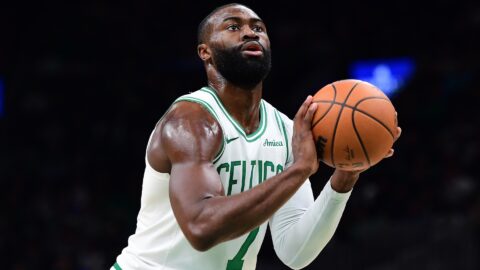The NHL swung and missed when it had a chance to do the obvious thing? Shocker.
Yet while it was unsurprising that the NHL failed on a number of levels by not suspending Matt Cooke, it was the explanation given by league disciplinarian Colin Campbell that still managed to be puzzling.
When announcing that no suspension would be given to Cooke for his hit on Marc Savard, Campbell said that the hit was essentially the same hit that the Flyers’ Mike Richards laid on the Panthers’ David Booth earlier this season. That hit did not draw a suspension for Richards, so Campbell argued that neither should this one for Cooke.
OK.
Forget that Cooke has a history of cheap shots (i.e., leaving his feet to nail Artem Artisimov in the face, unnecessarily sticking out a leg with intent to injure the league’s newest young star, allegedly biting an opponent in a scrum, forcing perhaps the most finesse player in the game into dropping the gloves, kicking a goalie in the head, etc.).
Forget that Savard still can’t give updates on his health to his general manager because he can’t stay awake long enough.
Forget everything. Just look at the two hits, and it’s undeniable that they are different.
Let’s look at the Richards hit on Booth. As Booth carried the puck into the offensive end, his eyes were looking at the goal line. Shortly after crossing the blue line, he appeared to catch a Flyer coming at him out of the corner of his eye, so he dished the puck to his left. He then turned his head away from the approaching Flyer, probably with the hope of avoiding contact. After making the pass, Booth then turned his head back toward the Flyer. Unfortunately for Booth, Mike Richards was that Flyer, still flying toward him without one inkling of slowing down.
Richards made heavy contact, catching Booth up high and knocking him out of hockey for three months. It was an ugly, vicious hit. Was there intent to injure? Sure, doesn’t every hit have some of that to a degree? But the difference is that Booth at least had a chance — albeit a small one — to avoid the hit before he carried the puck over the blue line.
Now let’s look at the Cooke hit.
Savard, backing toward the center of the high slot, took a pass from his winger. He received the pass and fired a shot on net, the puck on his stick for no longer than a second — a second during which his back was facing Cooke. In fact, the gap of time between the puck leaving Savard’s stick and the hit may have been longer than the actual time the puck was ever on Savard’s stick.
Then came Cooke, swooping in, targeting the head and undeniably letting loose his elbow from his side (the high-angle replay at the 50-second mark of this video shows the elbow’s separation and return to the ribcage).
Side note: When Milan Lucic was suspended during the playoffs — during the playoffs — for a high hit on Maxim Lapierre, Campbell explained in a statement that he could not tell whether Lucic high-sticked Lapierre, but that it was close enough to a high-stick to warrant a suspension. On Monday of this week, Campbell explained that he could conclusively see that it was Cooke’s shoulder and not his elbow that made contact with Savard’s jaw. In other words, “close enough” was OK to suspend a player in one instance but not nearly enough to suspend another player in another instance.
Back to the hit in question. The fact is, Savard never had a chance to even see Cooke, and Cooke targeted Savard’s head. It was similar to the Richards hit on Booth only in its location on the ice and the point of contact between the two men involved. The fact that a penalty wasn’t called on the play only further explains how the late the hit came.
The assessment given by the league also ignores the fact that even though Richards wasn’t suspended, he probably should have been. Was it a filthy, malicious hit? That’s debatable, but more people would probably say it was clean. Those same people could still understand a one- or two-game suspension, a slap on the wrist that may prevent a similar hit from happening again.
The same can be said with this hit. Was Cooke’s goal to put Savard on a stretcher? Doubtful, but he still placed a hit on a fellow player that was dangerous. If Cooke was suspended for two games, the NHL would not have to defend its decision.
Now the league could have an ugly situation on its hands next week when the Penguins visit the Bruins on Thursday night.
Let’s say the Bruins retaliate in a violent fashion (which is unlikely but not unthinkable). Let’s imagine a worst-case scenario — a Todd Bertuzzi moment. When Bertuzzi punched Steve Moore from behind in February of 2004, the NHL got publicity for all the wrong reasons. Talking heads on Sunday morning talk shows talked about violence in sports. Soccer moms (and hockey dads) talked about how horrific the incident was, and the NHL, a league that struggles for attention as it is, simply looked bad.
Colin Campbell — and even Gary Bettman, for that matter — had a chance to prevent another ugly stain on the game of hockey. Instead, the only thing all the league’s executives can do is sit, watch and hope.
In his explanation, Campbell stressed the need for consistency. If the goal was to be consistently wrong and to consistently put players in danger, then it’s mission accomplished.



